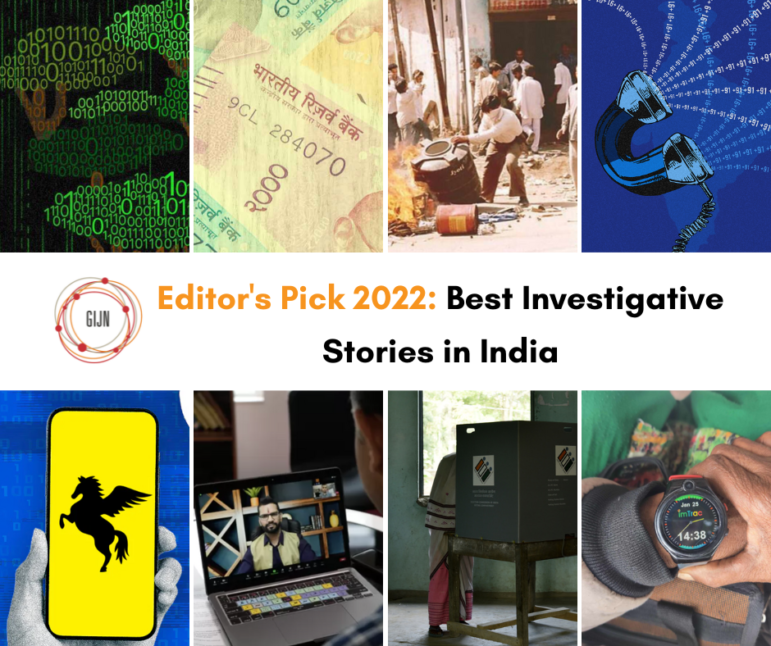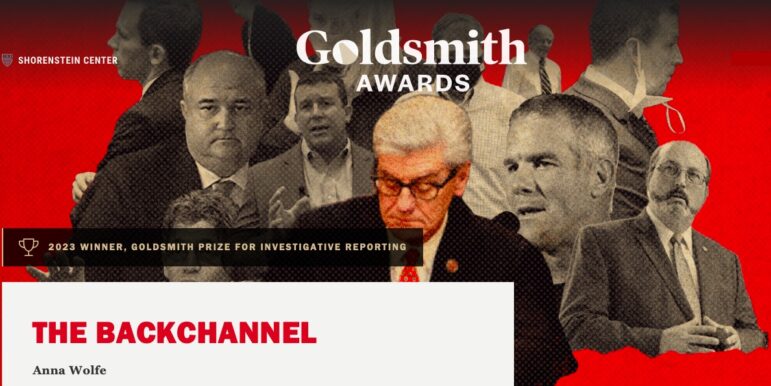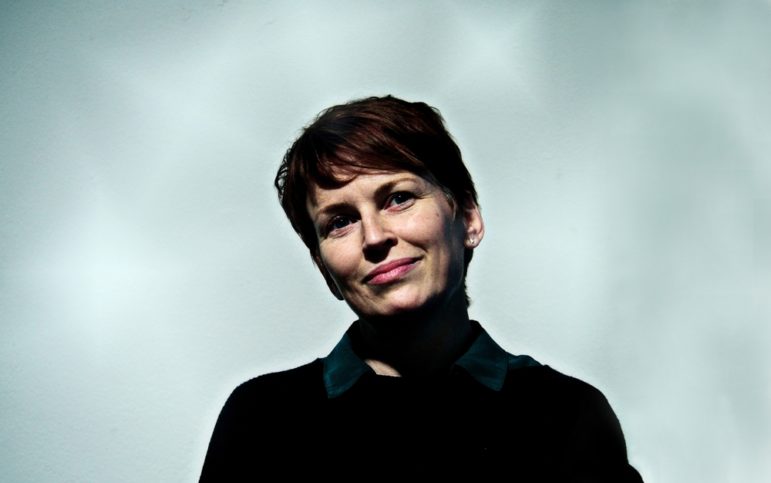

The Data Sleuths of San José: How Costa Rican Reporters Used Data To Bring Down a System of Sleaze
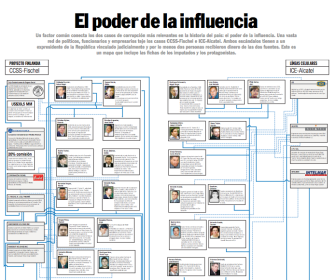 The real estate agent was angry. She had spent weeks helping her well-heeled client shop around for the house of his dreams — and now, just as they were about to close the deal, he announced that he was backing out. The client explained that a generous friend had decided to buy the place instead — directly from the developer, thus bypassing the agent — and rent it out to him. The broker, deprived of her hard-earned fee, began venting to her friends.
The real estate agent was angry. She had spent weeks helping her well-heeled client shop around for the house of his dreams — and now, just as they were about to close the deal, he announced that he was backing out. The client explained that a generous friend had decided to buy the place instead — directly from the developer, thus bypassing the agent — and rent it out to him. The broker, deprived of her hard-earned fee, began venting to her friends.
In the fall of 2003 the story made its way to journalists at La Nación, the leading national newspaper in the Central American republic of Costa Rica. The reporters at the paper’s investigative unit pricked up their ears as soon as the disgruntled real estate agent spoke the name of her exasperating client: Eliseo Vargas, the man in charge of the country’s vaunted national health-care agency. “We didn’t really know what she had,” recalls reporter Ernesto Rivera. “She was just angry she didn’t get her commission. She knew who the guy was, but she didn’t know why he was acting that way.”
Rivera and his colleagues smelled a story. Yet as the journalists started digging into the tale of Vargas’s peculiar living arrangements, it never occurred to them that they were about to unravel a scandal that wouldupend their nation’s sedate political establishment. In the early 2000s, Costa Rica enjoyed a long-established reputation as the most prosperous and well-managed country in its region. But by the time the Nación reporters were done, they had uncovered a wide-ranging web of corruption that extended through the political and business elite.
Along the way they derailed the careers of three ex-presidents, sending two of them to jail; prompted far-reaching legal reform; and jolted a major blow to a cozy political system that had, until then, been dominated by two main parties. Alejandro Urbina, the paper’s editor in chief at the time, puts it this way: “The current president wouldn’t be the president if we hadn’t published these stories.”
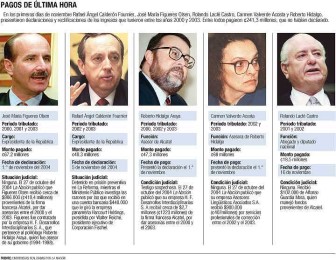 The three journalists who made up La Nación’s investigative unit — Giannina Segnini, Mauricio Herrera, and Rivera — deployed the full arsenal of traditional reporting techniques as they pursued the story. But the sheer magnitude of the financial and political information they unearthed prompted them to rely increasingly on computerized tools to rummage through databases that revealed unexpected connections. While tips from well-informed sources like the disgruntled real estate agent are vital, says Segnini, human sources also have limitations: “You can’t visit 160,000 people,” she notes. “But you can easily interrogate 160,000 records.”
The three journalists who made up La Nación’s investigative unit — Giannina Segnini, Mauricio Herrera, and Rivera — deployed the full arsenal of traditional reporting techniques as they pursued the story. But the sheer magnitude of the financial and political information they unearthed prompted them to rely increasingly on computerized tools to rummage through databases that revealed unexpected connections. While tips from well-informed sources like the disgruntled real estate agent are vital, says Segnini, human sources also have limitations: “You can’t visit 160,000 people,” she notes. “But you can easily interrogate 160,000 records.”
Segnini, who headed La Nación’s investigative unit from 1994 to 2014, started working with data from early on in her career at the paper. Born with a penchant for numbers, she flirted with physics in college before deciding that her heart lay with journalism. It didn’t take long for her to figure out that she could combine her love of reporting with her fondness for information technology.
A few years after arriving at La Nación she went to court to obtain access to data on government anti-poverty subsidies — which she then cross-referenced with databases on property ownership, vehicle registration, and salaries. The comparison revealed that some of those getting the subsidies were actually well-off; it turned out that crooked politicians were using the program to dispense patronage. In another story, Segnini and Rivera used data to delve into suspicious campaign contributions during a presidential election, revealing a pattern of irregularities that ultimately prompted a major reform of campaign finance laws.
By contrast, the 2003 investigation started off in decidedly low-tech fashion. Though Vargas’s mysterious house was located in a gated community, an adjacent golf course offered a good view of comings and goings at the property — so Rivera decided to get a closer look by working as a temporary sports correspondent. The reporters pored over property records and deed registries. Acting on a well-informed hunch, they identified a leading medical supply company, Fischel Corporation, as the most likely candidate behind the purchase of the house.
After Segnini managed to obtain a list of lawyers who worked for the company, the journalists compared the names with notary records and soon confirmed that the purchase of the house had been handled by one of the company’s attorneys. In April 2004 La Nación published a report revealing that Vargas was living in a luxury home that had been bought by Fischel’s chief financial officer.
The news packed a punch — but in some ways the story was just as notable for what it didn’t say. The reporters couldn’t prove that the house had been bought with company funds, and they hadn’t unearthed any evidence that it was a bribe for services rendered. Vargas himself insisted that he was paying rent for the privilege of living in the property. “He said, ‘Yes, the CFO bought it for me,’” Rivera recalls. “But he’s just renting it to me. Anyone can rent a house.” He also presented the journalists with rent bills to support his claim. The journalists, who suspected the documents were faked, weren’t convinced.
Even so, the reporters were astonished when the appearance of their report prompted Vargas’s immediate resignation: “We couldn’t understand why he would do that,” says Segnini, noting that they still lacked a concrete quid pro quo. The Costa Rican president issued a statement supporting Vargas and harshly rejecting the newspaper’s story. Yet Vargas’s dramatic resignation seemed to confirm that they were on to something big. But how to push forward to the next level?
This was the moment, the reporters say, when they decided to see what they could find in the data. “I was actually very skeptical of the idea,” says Rivera. “It’s a numbers game. I couldn’t see how it would lead us to reality. But Giannina developed a system.” “We decided to reverse-engineer the bribe,” Segnini recalls. “We had the bribe, but not the why. So we started digging into every single procurement contract from the social security agency” — the Caja Costarricense de Seguro Social (CCSS), the agency, headed by the disgraced Vargas, that runs Costa Rica’s national health-care system.
The house Vargas was living in had cost $735,000, a high price by Costa Rican standards. The journalists reasoned that a contract that justified such a bribe ought to run in the tens of millions of dollars. The CCSS database was vast, and it took them days to comb through all the information. None of the contracts they found under Fischel’s name were big enough to justify a bribe of the scale they were seeking. So they proceeded to run a similar analysis of all of the deals that other companies had made with the government.
After weeks of painstaking research, they finally turned up the telltale clue: In 2001, when Vargas headed his party’s parliamentary group in the Costa Rican national assembly, he had orchestrated the passage of special legislation authorizing the purchase of $39 million worth of high-tech medical equipment from a Finnish supplier called Instrumentarium. (The law empowered the government to take out a loan from the Finnish government to finance the purchase.) Vargas and his political allies succeeded in securing parliamentary approval for the deal in a mere three days — a parliamentary tour de force that also thwarted effective oversight. Fischel Corp., it so happened, was the Finnish company’s designated representative in Costa Rica — and a member of the consortium that won the bid.
By now the Nación reporters were facing tremendous pressure. Other media organizations attacked their work. Well-connected politicians urged members of the paper’s board of directors to rein in the investigation. “That drove us forward,” says Rivera.
Through their investigation into the Vargas house, the reporters soon traced the funds for the purchase back to a Panama-registered shell company that had received the money from overseas. When the reporters traveled to Panama to explore the company registry there, they discovered that the mysterious firm was controlled by none other than Walter Reiche Fischel, Fischel Corp.’s CEO. That helped them prove that Fischel had provided the cash for Vargas’s house — in return for Vargas’s help in approving the medical equipment purchase.
But the revelations didn’t stop there. The reporters soon determined that the Panamanian company set up by Fischel was being used for other below-the-radar payments from abroad in matters that had nothing to do with the health service. “We realized that money was moving through in a different way and to a different group of people,” recalls Rivera. “And some of it didn’t seem connected to the health service issue.” It was a trail that led them straight to one of Costa Rica’s most powerful politicians, ex-President Rafael Ángel Calderón Fournier, a major power broker in the ruling Social Christian Unity Party. Calderón himself, they discovered, had pulled in a payoff of $520,000.
Thanks to the reams of financial data they’d amassed, the Nación team soon found itself unraveling a well-established system for the collection and distribution of under-the-table payments made by foreign companies in return for lucrative government contracts. Seventeen people, including ex-President Calderón, ended up going to jail. Costa Rican lawmakers passed legislation that tightly regulated lobbying and banned bribery. The government in Finland launched its own investigation of the medical equipment contract, which led to arrests and reforms there as well.
Most dramatically of all, though, the reporters’ work also led the way to another bribery scandal on an even grander scale than the first. As they burrowed into the system of illegal payments funneled through Fischel accounts, they stumbled upon another series of money transfers, this time originating in France. “So at the end what we were facing was two very similar criminal structures to move or transfer money as bribes,” says Rivera. “One was for social security, and the other was for ICE” — Instituto Costarricense de Electricidad, Costa Rica’s state-owned telecommunications and energy company.
As the reporters worked their way through reams of data that documented the transfers, they discovered $1.2 million that had gone to an account controlled by an obscure schoolteacher. Further digging soon revealed the full story: The millionaire teacher turned out to be the wife of ICE director José Antonio Lobo. “Costa Rica was one of the last countries in Latin America that still had monopolies in telecoms and energy,” Segnini says. “ICE controlled every single cell phone in the country. When you talk about ICE, it’s almost like a sect or a religion.” The money had come from the French telecommunications giant Alcatel, which had greased politicians’ palms to ensure that it would win a $302 million mobile-phone contract from ICE.
Lobo wasn’t the only one involved, of course — and he soon began giving up the identities of other participants in the scheme in order to better his chances in court. “He said, ‘Yes, I’m not alone here,’” recalls Segnini. “‘That money was a bribe from Alcatel, and 60 percent of it ended up with the president.” Segnini landed a monster scoop by publishing the ICE director’s confession to prosecutors on the front page of her paper just hours after he made it. “He said, ‘Even I felt dirty. We were counting out the money on the president’s desk.’”
The president in question (from 1998 to 2002) was Miguel Ángel Rodríguez; he received at least $140,000 and took a spot on the ICE board after leaving office. Another ex-president, José María Figueres, got $900,000. The scandal broke just as Figueres arrived in Davos, Switzerland, to take up a job running the World Economic Forum. (He was soon compelled to resign from the post and remained overseas until December 2011, when he returned to Costa Rica.) The Alcatel scandal ultimately widened to include several other countries besides Costa Rica. In 2010, the company, now known as Alcatel-Lucent, paid $137 million to settle a bribery investigation brought against it by the U.S. government.
So how did three journalists manage to crack open a cartel of corruption that encompassed many of their country’s most powerful politicians and business tycoons? “One key factor of the success of the team at that moment was the complementary skills of the people who belonged to it,” says Mauricio Herrera. “I think that’s very important for any team. It’s a bad idea to put together a group of people who are cut from the same cloth.” Segnini, with her technological bent, was the nerd in chief, always willing to experiment with a new approach. Rivera was the traditionalist storyteller, an award-winning fiction writer who wasn’t always convinced that computers were the way. Herrera, whose political views lay notably leftward of most of his colleagues at the right-of-center paper, brought a strong interest in ideology and social science.
The reporters also cite the vital role of Alejandro Urbina, the paper’s editor in chief. A graduate of the Massachusetts Institute of Technology and Columbia Journalism School, Urbina not only had a well-honed tech sensibility and a sound understanding of journalistic craft. He also hails from a prominent Costa Rican family, giving him crucial social capital at the moments when he needed to shield his reporters from establishment pressure.
“The reality is that you can never develop these stories in some sort of ideal environment,” says Herrera. “You have to struggle with colleagues, and the owners of papers. Sometimes it’s the editors who have to deal with these pressures.” Urbina, he notes, also served as a much-needed devil’s advocate, challenging the reporters on their facts and often pushing them to obtain better evidence before publication.
Urbina himself — an early adopter of online journalism — credits the paper’s publisher, Manuel Jiménez Echeverría, for backing him when things got tough. “You can’t go to sleep after you publish these things,” Urbina recalls. “You know the shit will hit the fan tomorrow. In your mind you have every headline and everything you’ve gone through, and you can’t go to sleep.”
Toppling an entrenched political system is a hard act for anyone to follow, but the members of the team have continued to break stories in the years since. Rivera used his hard-earned familiarity with data journalism to cast light on the murky finances of the Catholic Church and to expose tax evasion by high-placed government officials. Segnini built up a state-of-the-art team of programmers and designers that continued to push the frontiers of data journalism — continuously scraping public websites, for example, for up-to-date information that could offer leads for new investigations.
Today, though, it’s hard to escape the sense that La Nación, buffeted by the transformative turmoil it unleashed, has edged away from the sort of high-stakes reporting that once brought it glory. Worn down by long years of stress (including several death threats), Urbina gave up his job as the paper’s editor in 2010 for a new life as an investment consultant and gentleman farmer. In 2014, after Segnini left the paper, La Nación disbanded its investigative unit.
Rivera now edits an independent weekly magazine in San José; Herrera recently accepted a job as a government spokesman. Segnini teaches reporting at Columbia University in New York, preaching the power of data as a journalistic force multiplier. “Giannina went on to train journalists across Latin America and has inspired hundreds of great reporters in the Americas,” says David Kaplan, head of the Global Investigative Journalism Network. He notes that some of her Nación programmers, who have since left the paper for the International Consortium of Investigative Journalists, played important roles in the recent Swiss Leaks exposé, which lifted the veil on Swiss banking secrecy.
Yet despite her enthusiasm for computer-assisted reporting, Segnini is quick to caution against one-sided reliance on the information that databases provide: “Data is a representation of reality, and it’s not always accurate. Much of the time it’s wrong. So let’s see what reality shows, out in the field.”
“It was Giannina [Segnini] who had the vision,” says Rivera. “She said, ‘First we need to obtain databases — all of them we can get. Immigration, social security, property, phones, scholarships.’ At first I was anxious about using databases. ‘Numbers alone are not enough,’ I said. But experience showed me that the numbers talk about people — people’s thinking, people’s problems, people’s ambitions. People are the key.”
Urbina, for his part, says that he’s secure in the knowledge that his colleagues’ groundbreaking stories have transformed Costa Rica for the better: “I’d say that it’s much harder to keep a corrupt act secret; therefore it’s much harder to be a corrupt public servant today than it was 15 years ago.” “They never thought that someone would be able to discover how they paid the bribes,” reflects Herrera. “And they didn’t understand that when someone uncovered that mechanism, everything would be exposed to the light of the sun.”
This story originally appeared in Foreign Policy as part of its Democracy Lab series, Curbing Corruption: Ideas that Work. It is reprinted with permission.
Christian Caryl is the author of Strange Rebels: 1979 and the Birth of the 21st Century. A former reporter at Newsweek, he is a senior fellow at the Legatum Institute (which co-publishes Democracy Lab with Foreign Policy) and is a contributing editor at the National Interest. He is also a senior fellow at the Center for International Studies at the Massachusetts Institute of Technology and a regular contributor to the New York Review of Books.


